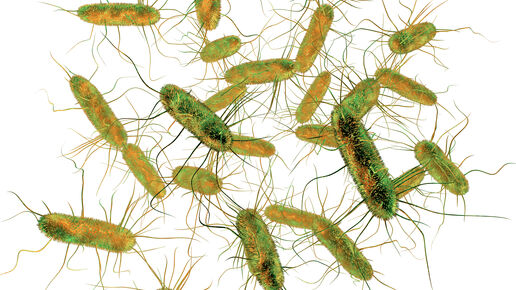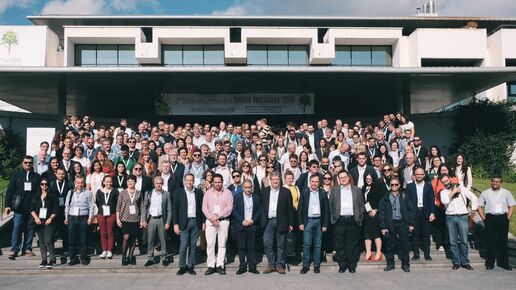
News
Veterinary drug residues in animals and food: compliance with safety levels still high
Data on the presence of residues of veterinary medicines and contaminants in animals and animal-derived food show high rates of compliance with recommended safety levels in the European Union...

News
Chemical hazards data and modelling boost
EFSA has updated its OpenFoodTox database which now includes toxicity data on almost 5,000 chemicals drawn from over 2,000 scientific evaluations carried out by EFSA since 2002. OpenFoodTox was...

News
Bees and pesticides: third consultation on guidance review
EFSA is carrying out a third stakeholder consultation as part of its review of the guidance on risk assessment of pesticides and bees. EFSA’s dedicated stakeholder consultation group and Member State...

News
New grant opportunity: microbiomes and plant pests
EFSA has launched its latest thematic grant call for proposals in the following areas: Evaluating the impact on/by gastrointestinal tract microbiomes (human and domestic animals) in assessments...

News
Coronavirus: no evidence that food is a source or transmission route
EFSA is closely monitoring the situation regarding the outbreak of coronavirus disease (COVID-19) that is affecting a large number of countries across the globe. There is currently no evidence that...

News
Rift Valley fever: risk low but EU must remain vigilant
The European Union is not at imminent risk from Rift Valley fever, but developments in neighbouring countries mean that the EU authorities and Member States should strengthen, improve and harmonise...

Data visualization
Antimicrobial resistance in Europe - 2018
Resistance of Salmonella and E. coli in food, animals and humans. Explore 2018 data country by country.

News
Antimicrobial resistance in the EU: infections with foodborne bacteria becoming harder to treat
Salmonella and Campylobacter are becoming increasingly resistant to ciprofloxacin, one of the antibiotics of choice for treating infections caused by these bacteria. The conclusion is part of the...

News
PFAS public consultation: draft opinion explained
Polyfluoroalkyl substances, or PFAS, are a group of man-made chemicals that includes perfluorooctanoic acid (PFOA), perfluorooctane sulfonate (PFOS), perfluorononanoic acid (PFNA), perfluorohexane...

News
New survey sheds light on food safety perceptions in pre-accession countries
EFSA’s Eurobarometer on food safety continues to generate valuable insights on consumer attitudes, with newly available results from five out of seven EU pre-accession countries – Albania, Montenegro...

News
New surveys boost food consumption database
EFSA has expanded its food consumption database with a new batch of data collected under the EU Menu project. The new release includes nine additional dietary surveys carried out in six countries –...

News
African swine fever: disease spreading slowly in EU
EFSA has published its latest annual update on the presence of African swine fever (ASF) in the European Union. During the period covered by the report – November 2018 to October 2019 – Czechia became...

News
Rabbit cages: EFSA identifies welfare issues
The welfare of adult rabbits kept in conventional cage systems is worse than that of those housed in other systems used in the EU, EFSA has concluded.

News
Salmonella the most common cause of foodborne outbreaks in the European Union
Nearly one in three foodborne outbreaks in the EU in 2018 were caused by Salmonella. This is one of the main findings of the annual report on trends and sources of zoonoses published today by the...

Infographic
Tips from society - Antibiotics and food safety
This infographic provides a good basis for the effectiveness of campaigns on antibiotics and food safety.

News
Poultry welfare at slaughter: hazards identified, measures proposed
EFSA has proposed measures to address the animal welfare hazards most commonly observed during the slaughter of poultry for food production and disease control. A comprehensive overview published...

News
African swine fever: early detection is key to controlling spread
Improved surveillance, communication and collaboration are key to controlling the spread of African swine fever in Europe, according to a new risk assessment carried out by EFSA. The assessment...

News
MammalNet is live! Download a simple app and help us collect data on wild mammals in Europe
EFSA is calling on outdoor enthusiasts and nature lovers to help us track the movements of wild mammals. When you see a species we are looking for, simply take a photo and upload it to our platform...

News
Xylella fastidiosa: ‘Together we can find solutions’
“The whole EU territory is at risk from Xylella fastidiosa, and the more the scientific community works together on this issue, the quicker we’ll be to find solutions to tackle this pest.” That was...

News
Priority plant pests in the EU: 5 things you need to know
What are priority pests? The 20 pests on the list published by the European Commission in October 2019 are quarantine pests that have been identified as top priorities for EU Member States based on...

News
Plant health: EU prioritises 20 pests
The European Commission has published a list of 20 “priority pests” that present the most serious economic, environmental and social threat to EU countries. The list includes Xylella fastidiosa, the...

News
Bees and pesticides: second consultation begins on guidance review
EFSA is carrying out a second stakeholder consultation in support of the review of its guidance on pesticides and bees. The dedicated stakeholder consultation group has been asked to comment on the...

News
Plant health newsletter: what’s on the horizon?
EFSA’s monthly round-up of plant health coverage in the media is now available on the EFSA Journal platform. The newsletter gathers together published articles and updates on plant pests that have...

News
Age to start complementary feeding of infants
At what age is it safe for infants to start eating pureed and finger foods in addition to breastmilk or formula? We have just completed a comprehensive evaluation of the scientific evidence on this...

News
Updating DRVs: job done, after 10 years and 34 nutrients
The publication this week of dietary reference values (DRVs) for sodium and chloride marks the end of ten years of work by EFSA’s nutrition scientists. It started in 2009 after the European Commission...

News
Chlorpyrifos: assessment identifies human health effects
The pesticide chlorpyrifos does not meet the criteria required by legislation for the renewal of its approval in the European Union, EFSA has said in a statement. The approval period for chlorpyrifos...

News
Guidance on bees and pesticides: work plan published
EFSA has outlined how it plans to review its guidance on the risk assessment of pesticides and bees in the EU. As the outline shows, stakeholders and pesticide experts from Member States will be...
News
Sustainability, innovation, and perception of risks among research priorities for food safety
EFSA has identified research priorities for food safety for the next 5 to 10 years. Authors of an editorial published in the EFSA Journal looked at how research can stimulate innovation and how...

News
App developer console opens up our food safety data
A new “developer portal” using application programming interface (API) technology makes EFSA’s information more accessible to software developers, allowing them to design creative new apps and tools...

News
Bee health: EFSA’s work recognised at EU awards
EFSA’s work to raise awareness about bee health was recognised this week when it received the Excellence through Collaboration award from the EU Ombudsman. The Ombudsman’s awards recognise initiatives...

Data visualization
Pesticides residues 2017
This data visualisation tool presents the main results from the monitoring of pesticide residues in food carried out in Europe in 2017.






